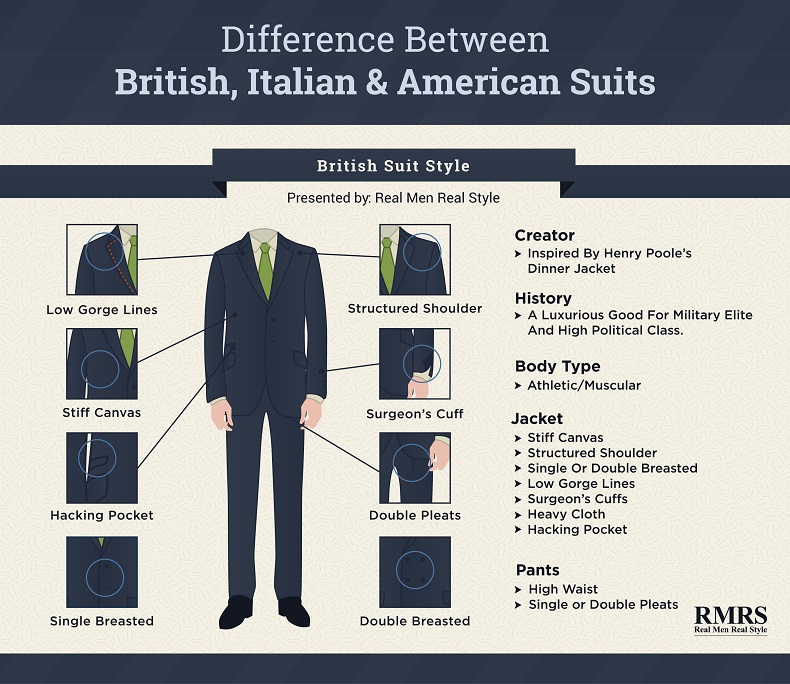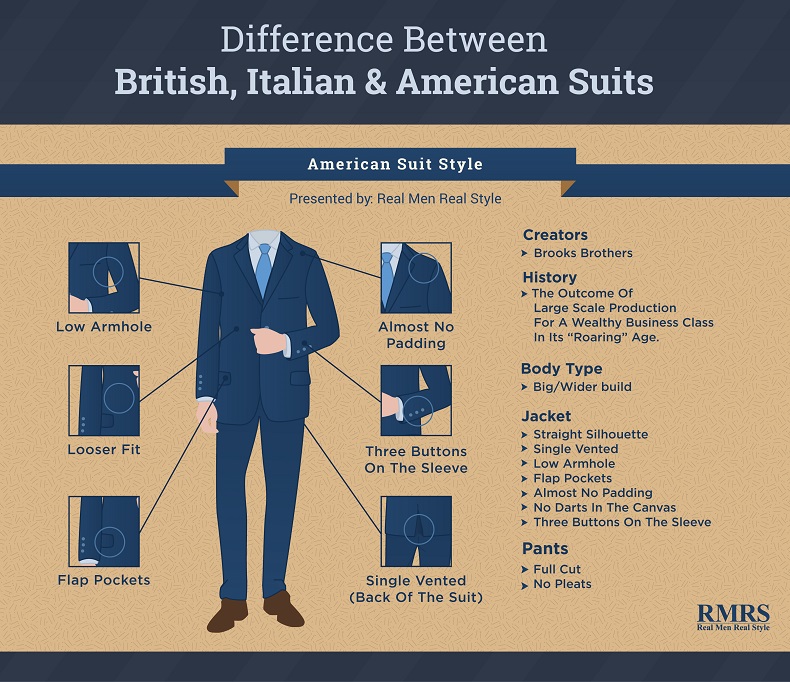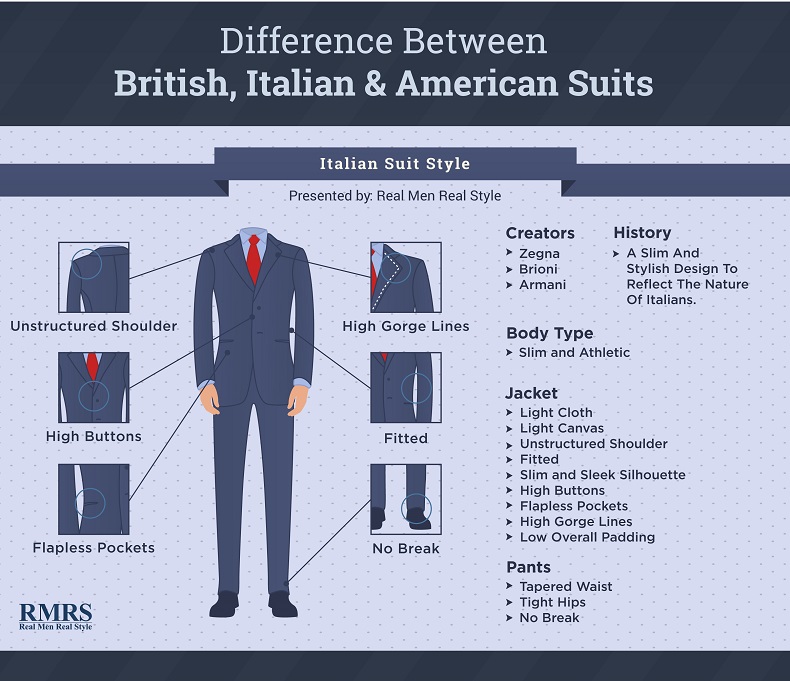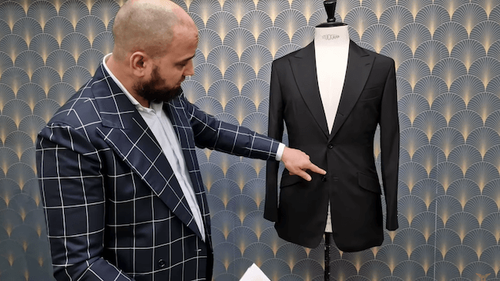Every bespoke tailor has its own signature tailoring style, which has been developed by years and years of experience, knowledge, passion and artistic creativity. Over the years suit styles have also developed. Nowadays you see a lot of suits that mix the different features and styles. However, traditionally there are three suit styles. Those styles are British, American and Italian.
British suit style
History
The British suit style finds its origin at Savile Row. Savile Row’s place in the formal history of suiting was cemented in the mid-19th century, when the Prince of Wales ordered a tailless smoking jacket, a relatively informal jacket style, made out of the fabrics traditional for a tailcoat. the Prince’s new style, called a dinner jacket, began a trend that revolutionized British fashion, introducing casual styles into the strictly regulated canon of English dress wear. The vision of the Prince of Wales, together with the creative mind of a skilled tailor, sir Henry Poole, slowly changed what was considered formal wear amongst an extremely traditional high class. The dinner jacket, and, of course, the whole new suit style they created, had a set of unique characteristics that persisted through time, were passed from generation to generation arriving in our wardrobes under the label “British style”. This is one the greatest examples of timeless style.
Characteristics
The British suit is emphasized by structured shoulders, a stiff canvas and low gorge lines, giving the jacket a very sophisticated look. The fit is tailored to be close to the body, with close fitting sleeves ending with surgeon’s cuffs and a high armhole. The jacket can either be single-breasted or double breasted, with usually two vents and a ticket pocket. The pants have a high waist and up to 3 pleats (a fold created by doubling fabric on itself and securing it in place).
These type of suits are ideal for average built men.
American suit style
History
The rise to popularity of these suits came in 1920’s by Ivy Leaguers. At the turn of the 20th century, a distinctly American suit style emerged among the world’s fashions: the sack suit. Modeled after a French coat popularized during the 1840s, the sack suit was loosely-fitted, giving its wearer a soft silhouette. Manufacturers, like Brooks Brothers, were looking for low-cost garments to produce in large quantities, garments that lent themselves to industrialized production. Because the sack style was meant to look baggy, it was already a one-size-fits-all product: less variation was less expensive.
Characteristics
In its original form this suit is the least stylish. Its distinguished characteristics are single vent in the back, higher armhole, straight lines, flap pockets and natural (almost no padded) shoulders giving you softer silhouette. Also these suits were very baggy. Looser cut in these suits is very rewarding if you have to spend countless hours in them. The coat was single breasted with two or three buttons. The sleeves wear with a loose fit and feature three buttons only. Characteristics of the pants are that they were not pleated and they are cut full.
These type of suits are ideal for big/wilder built men.
Italian suit style
History
Brioni is widely credited as the innovator of the “Italian” style. They introduced their style to the world in 1952, at the first fashion show to feature a male model as its focal point. Especially in America it got famous because of the 1953 movie ‘Roman Holiday’, in which Gregory Peck wore Brioni suits. The “new” Italian style quickly won popularity over the American suit and the British suit.
Characteristics
The Italian suit style is modern, trendy and cut very slim. Italians were not comfortable in the structured British suit. A suit that is too heavy to be worn comfortably in warmer weather. The Italian prefer to use lighter cloths. Also the feel of the suit is lighter. The jacket is considerably less structured compared to the British one, and as a result of that, the cloth follows one’s natural curves. The jacket is a little bit shorter, shoulders are padded and the jacket has a V-shape. Pockets are flapless and the gorge lines are high. The jackets originally did not have any vents but today two vents are common in Italian suits. The pants have a tapered waist and tight hips.
These type of suits are ideal for slim/athletic built men.
Conclusion
On average, Italian suits work best with a slim and athletic person. American suits are for a more tough built. British suits are still the most formal wear, and can be highly tailored to any body type. But if the traditional suit styles do not fit you, your idea of style and your personality, then combine them to create a unique suit. We would love to be of assistance.
Pictures by www.realmenrealstyle.com










